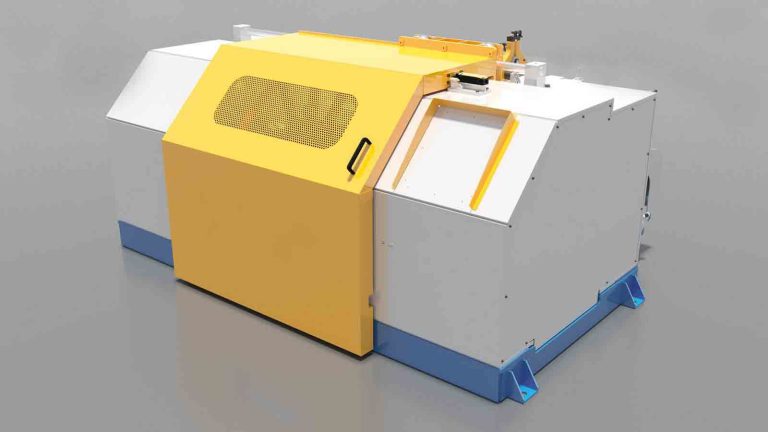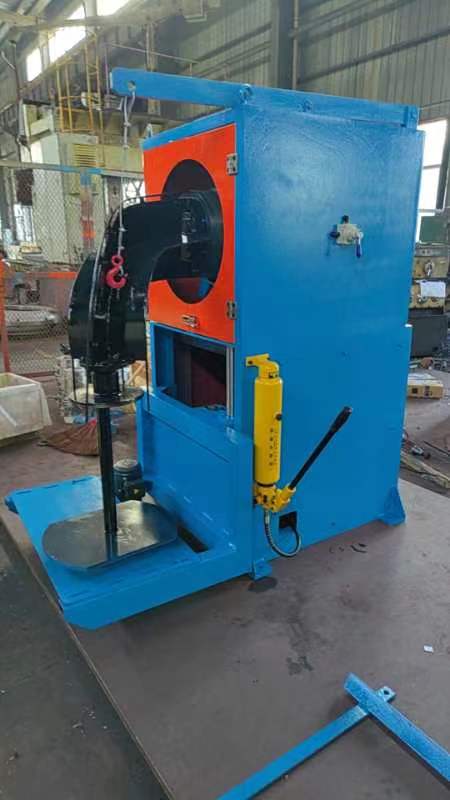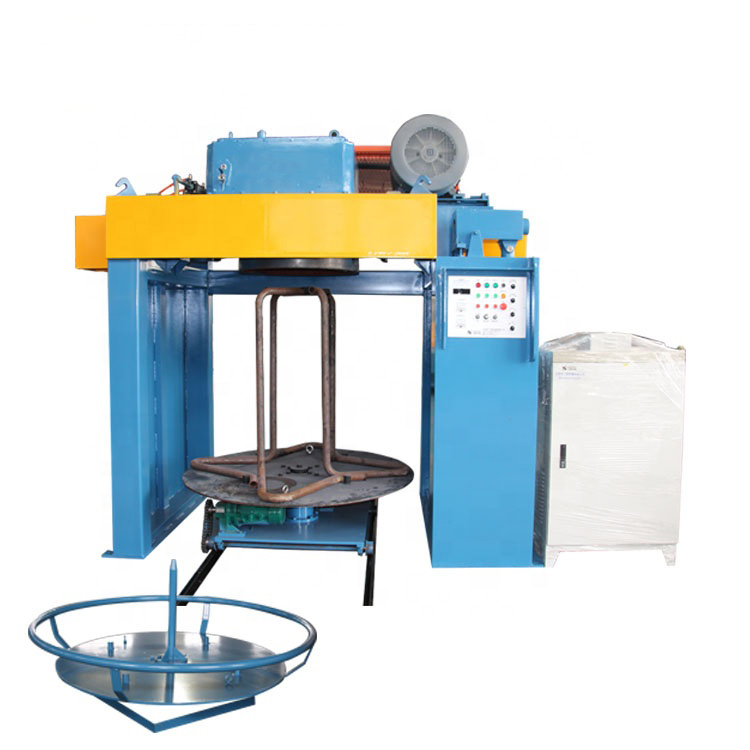Benefits of Using High-Speed Straightening and cutting machine
High-speed straightening and cutting machines are essential tools in various industries that require precision cutting and straightening of metal wires, rods, and tubes. These machines offer numerous benefits that can significantly improve the efficiency and productivity of manufacturing processes. In this article, we will explore the advantages of using high-speed straightening and cutting machines in industrial settings.
One of the primary benefits of using a high-speed straightening and cutting machine is the increased production output. These machines are designed to operate at high speeds, allowing for quick and efficient processing of materials. This means that more pieces can be straightened and cut in a shorter amount of time, leading to higher production volumes and faster turnaround times. This can be especially beneficial in industries where time is of the essence, such as construction, automotive, and aerospace.
Another advantage of high-speed straightening and cutting machines is the precision and accuracy they offer. These machines are equipped with advanced technology that ensures precise cutting and straightening of materials, resulting in consistent and high-quality finished products. This level of precision is crucial in industries where even the slightest deviation can lead to costly errors or defects. By using a high-speed straightening and cutting machine, manufacturers can ensure that their products meet the strictest quality standards.

In addition to increased production output and precision, high-speed straightening and cutting machines also offer improved safety in the workplace. These machines are designed with safety features that help prevent accidents and injuries during operation. For example, many machines are equipped with sensors that can detect abnormalities or malfunctions and automatically shut down the machine to prevent accidents. This helps create a safer working environment for operators and reduces the risk of workplace injuries.
Furthermore, high-speed straightening and cutting machines are highly versatile and can be used for a wide range of materials and applications. Whether you need to straighten and cut steel, aluminum, copper, or other metals, these machines can handle a variety of materials with ease. This versatility makes them a valuable asset in industries that work with different types of materials and require flexibility in their manufacturing processes.
Another benefit of using high-speed straightening and cutting machines is the cost savings they offer. These machines are designed to be energy-efficient and require minimal maintenance, which helps reduce operating costs in the long run. Additionally, the increased production output and precision of these machines can lead to higher profitability for manufacturers by reducing waste and improving overall efficiency.
In conclusion, high-speed straightening and cutting machines offer a wide range of benefits for industries that require precision cutting and straightening of materials. From increased production output and precision to improved safety and cost savings, these machines are essential tools that can help manufacturers streamline their manufacturing processes and achieve higher levels of productivity. By investing in a high-speed straightening and cutting machine, companies can stay ahead of the competition and meet the demands of today’s fast-paced industrial environment.
How to Choose the Right High-Speed Straightening and Cutting Machine for Your Business
High-speed straightening and cutting machines are essential equipment for businesses in various industries, such as construction, manufacturing, and automotive. These machines are designed to efficiently straighten and cut metal wires, rods, and tubes to precise lengths and dimensions. Choosing the right high-speed straightening and cutting machine for your business is crucial to ensure optimal performance and productivity.
When selecting a high-speed straightening and cutting machine, there are several factors to consider. The first factor to take into account is the type of material you will be working with. Different machines are designed to handle specific types of materials, such as steel, aluminum, copper, or titanium. It is important to choose a machine that is compatible with the material you will be processing to ensure accurate and efficient results.
Another important factor to consider is the diameter and length of the material you will be working with. High-speed straightening and cutting machines come in various sizes and capacities, so it is essential to choose a machine that can accommodate the dimensions of your material. Additionally, consider the production volume and speed requirements of your business to select a machine that can meet your production needs.
The accuracy and precision of the machine are also crucial factors to consider. High-speed straightening and cutting machines should be able to straighten and cut materials with high precision and consistency to ensure quality results. Look for machines that are equipped with advanced technology and features, such as digital controls and automatic adjustment systems, to achieve accurate and reliable performance.
Furthermore, consider the maintenance and service requirements of the machine. Choose a high-speed straightening and cutting machine that is easy to maintain and service to minimize downtime and ensure continuous operation. Look for machines that are equipped with user-friendly interfaces and accessible components for easy maintenance and troubleshooting.
In addition to these factors, it is important to consider the reputation and reliability of the manufacturer. Choose a reputable manufacturer with a proven track record of producing high-quality and reliable machines. Research customer reviews and testimonials to gauge the satisfaction and performance of the machine from other users.
When choosing a high-speed straightening and cutting machine for your business, it is essential to consider your specific requirements and preferences. Evaluate the material type, diameter, and length, production volume, accuracy and precision, maintenance and service requirements, and the reputation of the manufacturer to make an informed decision.
In conclusion, selecting the right high-speed straightening and cutting machine for your business is a critical decision that can impact the efficiency and productivity of your operations. Consider the material type, dimensions, production volume, accuracy, maintenance, and manufacturer reputation when choosing a machine. By carefully evaluating these factors, you can choose a high-speed straightening and cutting machine that meets your business needs and ensures optimal performance.
Maintenance Tips for High-Speed Straightening and Cutting Machine
High-speed straightening and cutting machines are essential equipment in various industries, such as construction, manufacturing, and automotive. These machines are designed to straighten and cut metal rods, wires, and tubes quickly and accurately, increasing productivity and efficiency in production processes. To ensure the optimal performance and longevity of your high-speed straightening and cutting machine, regular maintenance is crucial.
One of the most important maintenance tasks for a high-speed straightening and cutting machine is keeping it clean. Dust, debris, and metal shavings can accumulate on the machine’s components, leading to increased wear and tear and potential malfunctions. Regularly cleaning the machine with a soft brush or cloth can help prevent these issues and keep the machine running smoothly.
In addition to cleaning, lubricating the machine’s moving parts is essential for proper maintenance. Lubrication helps reduce friction between components, preventing premature wear and ensuring smooth operation. Be sure to use the recommended lubricants for each part of the machine and follow the manufacturer’s guidelines for lubrication intervals.
Inspecting the machine’s cutting blades and straightening rollers regularly is also important for maintaining optimal performance. Over time, these components can become dull or worn, affecting the quality of the cuts and straightening results. Replace any damaged or worn blades and rollers promptly to avoid production delays and ensure consistent output quality.
Checking the machine’s electrical components, such as wiring, switches, and sensors, is another crucial maintenance task. Loose connections, damaged wires, or faulty sensors can lead to electrical issues and potential safety hazards. Regularly inspecting and testing these components can help identify and address any problems before they escalate.
Calibrating the machine’s settings and parameters is essential for achieving accurate cutting and straightening results. Over time, the machine’s settings may drift or become misaligned, affecting the precision of the cuts and straightening processes. Regularly calibrating the machine according to the manufacturer’s specifications can help maintain accuracy and consistency in production.
Regularly inspecting the machine’s safety features, such as emergency stop buttons, guards, and interlocks, is crucial for ensuring a safe working environment. Faulty or malfunctioning safety features can pose serious risks to operators and other personnel working near the machine. Test these features regularly to ensure they are functioning correctly and address any issues promptly.
Lastly, keeping detailed maintenance records and scheduling routine inspections by qualified technicians can help prevent unexpected breakdowns and prolong the lifespan of your high-speed straightening and cutting machine. By following a comprehensive maintenance plan and addressing any issues promptly, you can ensure the optimal performance and reliability of your machine for years to come.
In conclusion, proper maintenance is essential for maximizing the performance and longevity of your high-speed straightening and cutting machine. By following these maintenance tips and guidelines, you can keep your machine running smoothly, minimize downtime, and ensure safe and efficient production processes. Remember that regular maintenance is an investment in the longevity and reliability of your equipment, ultimately leading to increased productivity and profitability for your business.





